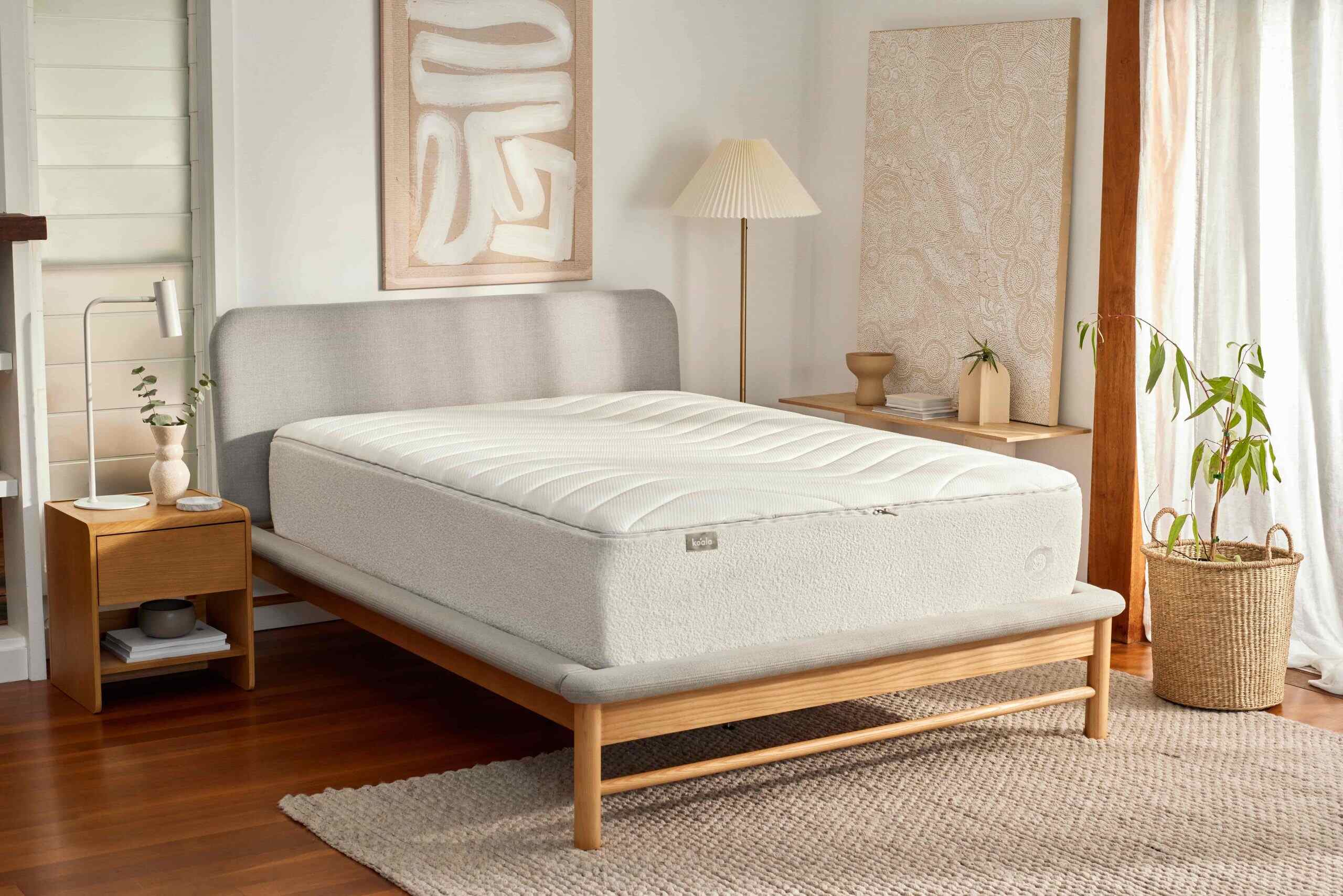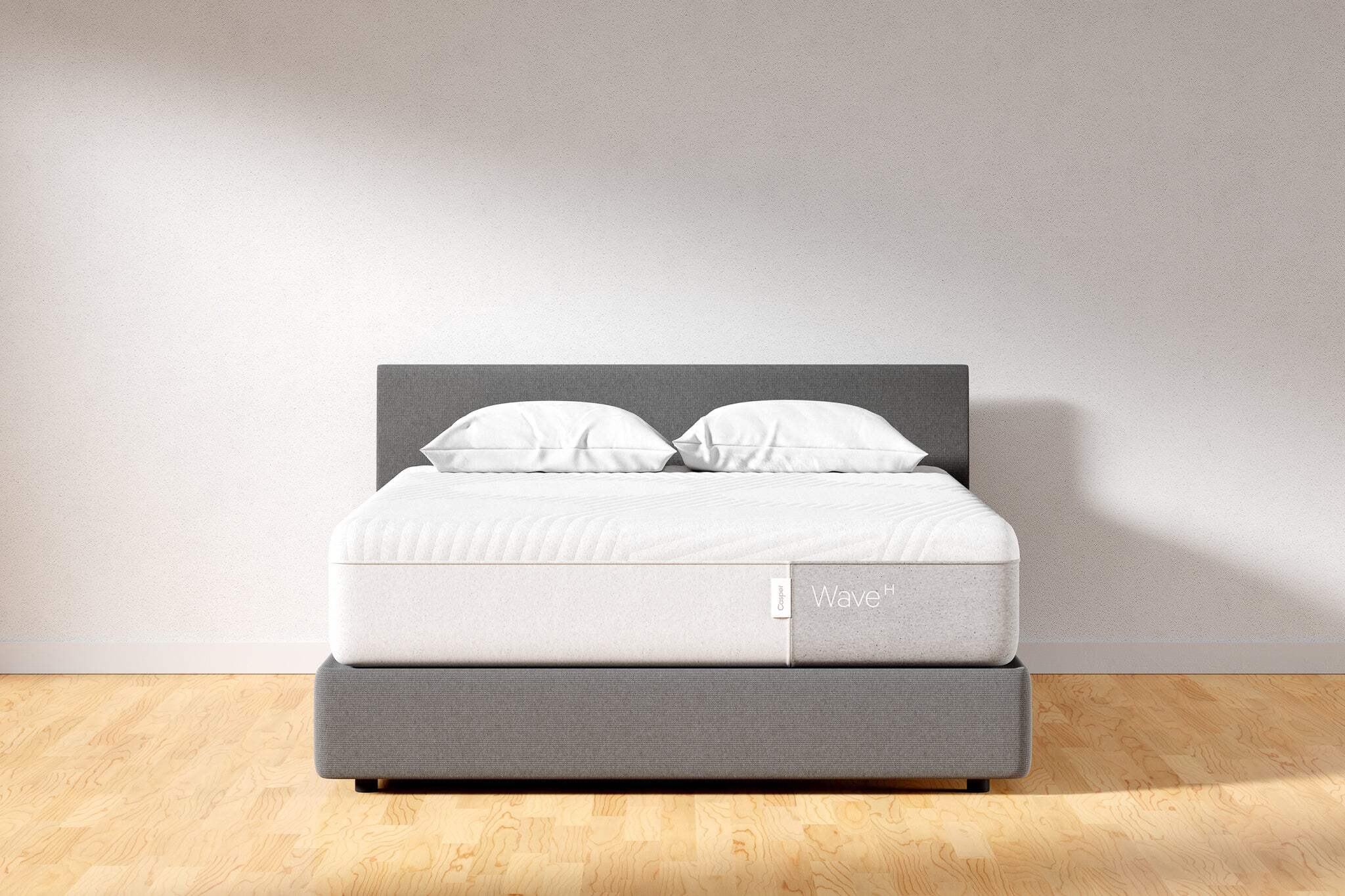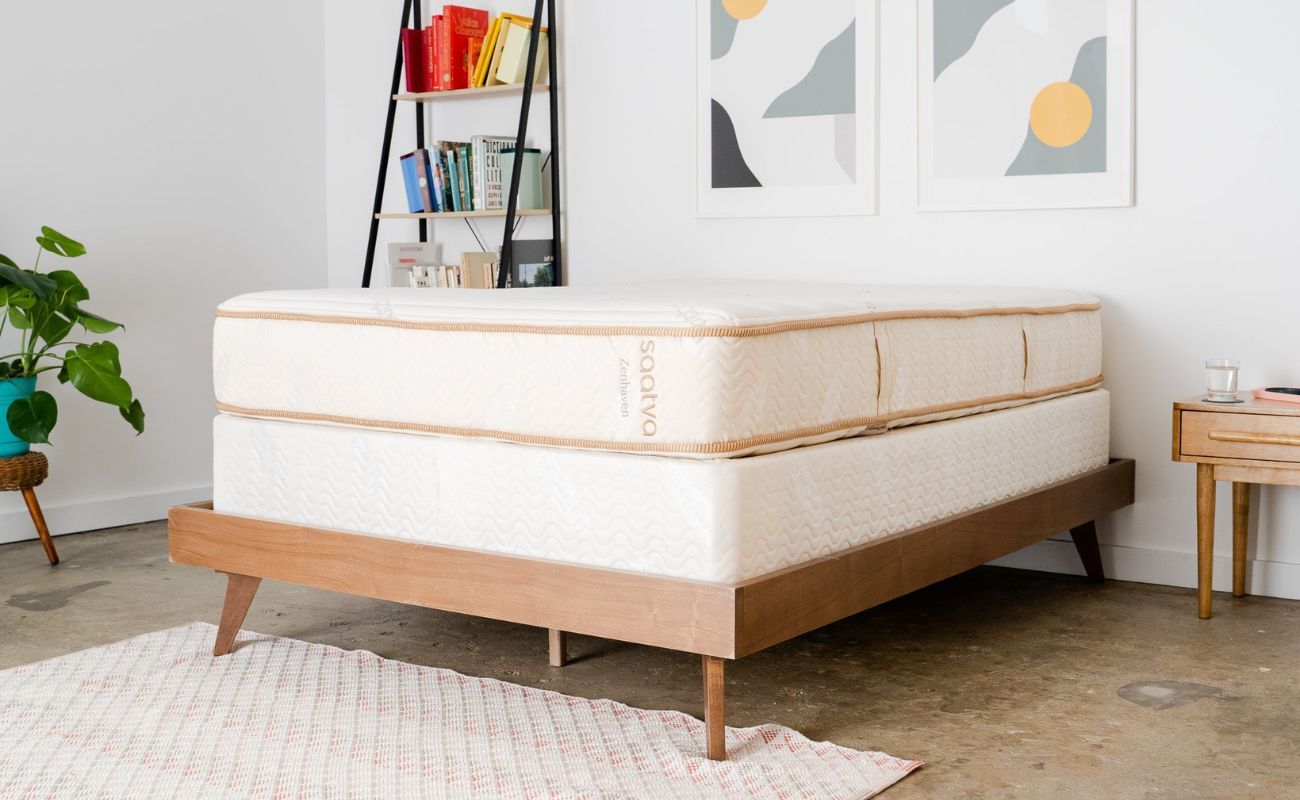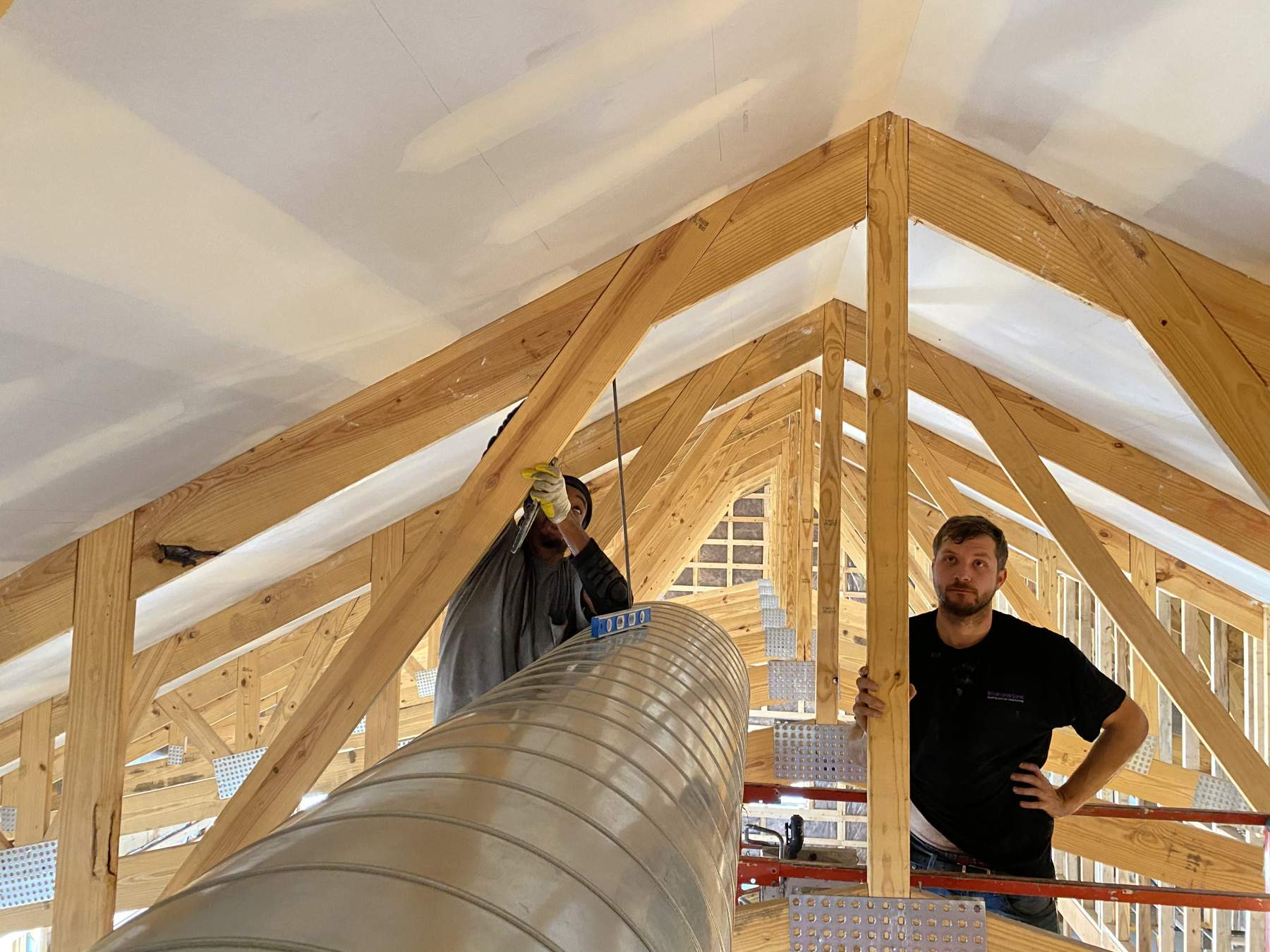Home>Furniture>Bedroom Furniture>When To Get A New Mattress


Bedroom Furniture
When To Get A New Mattress
Modified: December 7, 2023
Upgrade your bedroom furniture with a new mattress. Discover when it's time to replace your old bed for better sleep and comfort.
(Many of the links in this article redirect to a specific reviewed product. Your purchase of these products through affiliate links helps to generate commission for Storables.com, at no extra cost. Learn more)
Introduction
Choosing the right mattress is essential for a good night’s sleep. But what happens when your once comfortable and supportive mattress starts to show signs of wear and tear? How do you know when it’s time to get a new mattress?
A worn-out mattress can lead to a host of problems, including back and neck pain, allergies and asthma, sleep disruptions, and more. It’s important to pay attention to these signs and take action when necessary. In this article, we will explore the various indicators that it’s time to invest in a new mattress, ensuring you can enjoy a restful and rejuvenating sleep experience.
Key Takeaways:
- It’s time for a new mattress if you experience back and neck pain, sleep disruptions, allergies, or partner disturbance. Look for a mattress that suits your specific needs and promotes better sleep quality.
- Regularly assess your mattress for signs of wear and tear, such as visible sagging, loss of firmness, or uncomfortable sleep. Investing in a new mattress can enhance your sleep quality and overall well-being.
Signs of Wear and Tear
As mattresses age, they naturally start to show signs of wear and tear. These physical changes can greatly impact the overall comfort and support provided by the mattress. Here are a few key signs to look out for:
- Loss of Firmness: Over time, the materials in a mattress can break down, causing it to lose its firmness. If your mattress feels less supportive and starts to sag in certain areas, it may no longer provide the necessary support for your body.
- Visible Stains or Discoloration: Spills, sweat, and other bodily fluids can seep into the fabric of a mattress over time, leading to unsightly stains and discoloration. Besides being unappealing, these stains may also be a breeding ground for bacteria and allergens.
- Noise: If your mattress creaks or makes noise when you move around, it could be a sign that the internal components are wearing out. A noisy mattress can be highly disruptive to sleep, causing unnecessary disturbances throughout the night.
- Worn Out or Damaged Mattress Cover: The outer cover of a mattress is designed to protect the inner layers. As it gets older, it may start to become frayed, torn, or damaged. Not only does this compromise the aesthetic appeal, but it can also expose the mattress to additional wear and tear.
- Uncomfortable Sleep: If you find yourself tossing and turning, frequently waking up in the middle of the night, or experiencing discomfort that didn’t exist before, your mattress may be the culprit. An uncomfortable sleep surface can lead to poor sleep quality and leave you feeling tired and groggy in the morning.
If you notice any of these signs, it’s a clear indication that your mattress has surpassed its prime and is no longer providing the support and comfort your body needs. It’s time to start considering a new mattress.
Back and Neck Pain
One of the most common indicators that it’s time to get a new mattress is persistent back and neck pain. If you wake up with discomfort or experience pain throughout the day, your mattress may be to blame.
An old or worn-out mattress often loses its ability to properly support your spine, causing misalignment and placing unnecessary strain on your back and neck. This can lead to muscle stiffness, tension, and even chronic pain over time.
When your mattress is no longer able to provide adequate support, your body compensates by adjusting its posture during sleep. This can result in poor spinal alignment, leading to pressure points and discomfort. Even if you initially feel comfortable when lying down, you may experience pain and stiffness upon waking as your body tries to readjust to a more natural position.
If you consistently experience back and neck pain that subsides during the day, it’s worth considering a new mattress. Opting for a mattress that offers proper support and alignment can help alleviate your pain and contribute to a better sleep experience overall.
The ideal mattress for back and neck pain is one that promotes proper spinal alignment while providing adequate support. Look for a mattress with medium to firm firmness levels to ensure your body receives the necessary support without sinking too deeply. Additionally, consider mattresses with memory foam or latex materials, as they conform to your body’s shape and distribute pressure evenly.
Investing in a new mattress specifically designed to alleviate back and neck pain can make a significant difference in your overall comfort and well-being. Your body will thank you for the improved support and alignment, leading to more restorative sleep and a pain-free start to your day.
Allergies and Asthma
If you suffer from allergies or asthma, your mattress can play a crucial role in your overall respiratory health. Over time, mattresses can accumulate a significant amount of allergens like dust mites, pollen, pet dander, and mold spores, which can trigger allergic reactions and worsen asthma symptoms.
Dust mites, in particular, are a common allergen found in mattresses. These tiny creatures thrive in warm and humid environments, making your mattress an ideal breeding ground. As you sleep, you shed dead skin cells, providing a food source for dust mites. Their waste products, including feces and body fragments, can become airborne and trigger symptoms like sneezing, watery eyes, and congestion.
Similarly, mold spores can find their way into your mattress if it is exposed to moisture or if you live in a damp environment. Once inside, mold can proliferate and release allergenic particles into the air you breathe, causing respiratory issues and irritation.
If you find that your allergies or asthma symptoms are worse when you’re in bed or when you wake up, it may be a sign that your mattress has become a haven for allergens. In such cases, replacing your old mattress with a new one can greatly improve your respiratory health and overall sleep quality.
When selecting a mattress for allergy and asthma sufferers, consider those that are hypoallergenic and resistant to dust mites and mold. Look for mattresses with materials such as latex or memory foam, as these are naturally resistant to dust mites and mold growth. Additionally, choosing a mattress with a removable and washable cover can make it easier to keep it clean and free from allergens.
Regularly cleaning and maintaining your mattress can also help minimize the accumulation of allergens. Vacuuming your mattress, using allergen-proof mattress covers, and washing bed linens frequently can significantly reduce the presence of dust mites and other allergens.
By investing in a new mattress that is allergen-resistant and taking steps to keep it clean, you can create a healthier sleep environment and reduce the frequency and severity of allergy and asthma symptoms.
Sleep Disruptions
Do you find yourself tossing and turning throughout the night, struggling to find a comfortable position? Or perhaps you’re constantly waking up feeling hot, sweaty, or too cold? These sleep disruptions can indicate that your mattress is no longer providing the optimum sleep environment.
An old or worn-out mattress may lack proper temperature regulation, leading to discomfort and interrupted sleep. It can trap heat, causing you to feel excessively warm and sweaty, or it may not provide enough insulation, making you feel too cold. Either extreme can disrupt your sleep and leave you feeling restless.
Additionally, an uncomfortable mattress can contribute to the development of pressure points. When your body is not supported evenly, certain areas, such as the hips, shoulders, or spine, may bear excessive pressure. This can cause discomfort, pain, and even numbness, leading to frequent wake-ups throughout the night.
Moreover, an aging mattress may also transmit motion more easily, resulting in disruptions caused by your sleeping partner’s movements. If you find yourself feeling every movement made on your mattress, it can lead to a fragmented sleep pattern.
If sleep disruptions have become a common occurrence for you, it may be time to consider investing in a new mattress. Look for a mattress that offers temperature regulation features, such as gel-infused foam or breathable materials, to help keep you cool and comfortable throughout the night. A mattress with good motion isolation properties can also minimize disturbances caused by your partner’s movements.
Remember, a quality mattress should promote a peaceful and uninterrupted sleep experience. If your current mattress is failing to provide this, it’s worth exploring the options available and finding a mattress that better suits your sleep needs.
Age of Mattress
When considering whether to get a new mattress, one important factor to take into account is the age of your current mattress. While some mattresses can last longer than others, it’s generally recommended to replace your mattress every 7 to 10 years.
Over time, mattresses undergo wear and tear from regular use. The materials inside the mattress start to degrade, resulting in decreased support and comfort. The older a mattress gets, the more likely it is to develop issues such as sagging, lumps, or uneven firmness, which can disrupt your sleep and impact your overall well-being.
However, it’s essential to note that the lifespan of a mattress can vary based on factors such as quality, usage, and maintenance. A higher-quality mattress that’s properly cared for may last closer to the 10-year mark, while a lower-quality mattress may start showing signs of wear and tear sooner.
It’s also crucial to consider changes in your lifestyle and body over time. As we age, our bodies may require different levels of support and comfort. What was once suitable for your younger self may no longer meet your needs as you get older. Therefore, it’s important to reassess your mattress as part of your overall sleep health routine.
If you’re unsure about the age of your mattress, check for the manufacturer’s warranty or examine any visible signs of wear and tear. If your mattress is nearing or surpassing the 7 to 10-year mark, and you are experiencing discomfort or other issues, it’s likely time to start shopping for a new one.
By replacing your old mattress with a new one, you can ensure that you have a sleep surface that provides the support, comfort, and quality sleep you need to wake up feeling refreshed and rejuvenated each day.
It’s time to get a new mattress if you wake up with aches and pains, notice sagging or lumps, or if your mattress is over 7-10 years old.
Waking up Tired and Unrefreshed
Do you consistently wake up in the morning feeling groggy, tired, and unrefreshed, even after a full night’s sleep? If so, it could be a clear indication that your mattress is no longer providing the quality rest you need.
A worn-out mattress lacks the ability to properly support your body and keep it aligned while you sleep. As a result, you may find yourself tossing and turning throughout the night, struggling to find a comfortable position. This constant movement can cause sleep disruptions and prevent you from entering into deep, restorative sleep cycles.
In addition, an old mattress may no longer provide adequate pressure relief. Your body needs a sleeping surface that distributes your body weight evenly, reducing the strain on pressure points such as the hips, shoulders, and back. Without this support, you may experience discomfort, pain, and numbness, leading to disruptions in your sleep and leaving you feeling fatigued in the morning.
Furthermore, allergens and irritants accumulated in an older mattress can impair the quality of your sleep. Dust mites, pollen, pet dander, and mold can lead to allergies and respiratory issues that disrupt your rest. If you wake up with itchy or watery eyes, a runny nose, or excessive sneezing, it could be a sign that your mattress is contributing to your morning fatigue.
If you consistently wake up tired and unrefreshed, even after the recommended hours of sleep, it’s worth considering whether your mattress is the culprit. Investing in a new mattress that offers proper support, pressure relief, and allergen resistance can make a significant difference in the quality of your sleep. Look for a mattress that suits your preferred sleeping position, body type, and comfort preferences.
Remember, a good night’s sleep is essential for your overall health and well-being. By replacing your old mattress and ensuring you have a supportive and comfortable sleep surface, you can wake up feeling energized and ready to tackle the day ahead.
Visible Sagging or Indentations
One of the clear signs that your mattress is in need of replacement is visible sagging or indentations on the surface. Over time, mattresses can develop areas that sink or sag, which can greatly affect your comfort and sleep quality.
Sagging typically occurs in the areas where you apply the most weight, such as the middle of the mattress or where you sleep. The lack of proper support in these areas can cause your body to sink into the mattress, leading to poor spinal alignment and increased pressure on certain body parts.
If you notice visible sagging or indentations that are noticeable to the naked eye, it’s a strong indication that your mattress has lost its ability to provide the necessary support. Sleeping on a sagging mattress can contribute to discomfort, muscle stiffness, and even chronic pain.
It’s important to address visible sagging or indentations as soon as possible. Ignoring the issue can lead to further exacerbation of the problem, making it even more challenging to find a comfortable and supportive sleep surface. It’s best to replace your mattress before the sagging becomes too pronounced, ensuring you have a mattress that properly aligns your spine and supports your body’s contours.
When shopping for a new mattress, look for those with superior support capabilities, such as a sturdy innerspring system or high-density foam. These materials can resist sagging and maintain their shape over time. Additionally, consider opting for a mattress with a reinforced center zone or targeted support for areas prone to increased pressure, such as the hips and shoulders.
By replacing your mattress at the first signs of visible sagging or indentations, you can prioritize your comfort, spinal alignment, and overall sleep quality.
Partner Disturbance
If you share your bed with a partner, their movements during sleep can significantly impact your own sleep quality. Partner disturbance is a common issue experienced by couples, and it can be a major factor in considering the need for a new mattress.
An aging mattress may not effectively isolate motion transfer, meaning that movements made by your partner are more likely to be felt on your side of the bed. Every time they toss and turn, get in or out of bed, or change positions, you may be jolted awake or have your sleep disrupted. This can lead to fragmented sleep, reduced sleep efficiency, and overall tiredness throughout the day.
If you find yourself frequently waking up due to your partner’s movements, it may be time to consider a mattress that minimizes motion transfer. Look for mattresses with motion isolation technologies, such as individually wrapped coils or memory foam layers, that absorb and dissipate the movement. These types of mattresses can help reduce the transfer of motion, allowing you and your partner to enjoy a more peaceful and undisturbed sleep.
Additionally, consider mattresses with zoning or dual firmness options. These mattresses are designed to provide different levels of support to accommodate individual preferences and minimize disturbance caused by varying body weights and sleep positions.
Furthermore, if you and your partner have different sleep needs and preferences, such as varying firmness preferences or temperature preferences, a new mattress can offer an opportunity to find a compromise that satisfies both of you. There are mattresses available with customizable firmness options or cooling technologies that can help optimize each partner’s sleep experience.
By investing in a mattress that addresses partner disturbance, you can create a sleep environment that promotes undisturbed rest for both you and your loved one. Say goodbye to interrupted sleep and hello to peaceful nights together.
Health and Hygiene Issues
When considering whether it’s time to replace your mattress, it’s important to take into account the potential health and hygiene issues that can arise from an old or worn-out mattress. Mattresses can be a breeding ground for allergens, bacteria, and other harmful substances, which can have a negative impact on your health and overall well-being.
Over time, mattresses can accumulate dust mites, pollen, pet dander, and mold spores. These allergens can trigger allergies and asthma symptoms, leading to sneezing, coughing, watery eyes, and congestion. If you find that your allergies or respiratory issues are worse when you’re in bed or when you wake up, it’s a clear indication that your mattress may be contributing to the problem.
In addition to allergens, mattresses can also harbor bacteria, sweat, and bodily fluids. This can create an unhygienic sleep environment that can lead to unpleasant odors and potential health issues. Moisture from sweat can seep into the mattress, providing a breeding ground for bacteria and mold. Moreover, the accumulation of sweat and bodily fluids can create stains and discoloration on the surface of the mattress.
Another factor to consider is dust mite droppings. These microscopic particles can be inhaled during sleep, potentially causing respiratory problems and allergic reactions. Dust mites thrive in warm and humid environments, making mattresses an ideal habitat for their proliferation.
To maintain a healthy sleep environment, it’s crucial to replace your old mattress and invest in a new one that offers features to address health and hygiene concerns. Look for mattresses with hypoallergenic properties, such as those that are resistant to dust mites and mold. Mattresses with removable and washable covers can also facilitate regular cleaning, keeping your sleep surface free from allergens and bacteria.
Additionally, regular cleaning and maintenance of your mattress, such as vacuuming, using a mattress protector, and washing your beddings frequently, can help reduce the buildup of allergens and maintain a clean and healthy sleep environment.
By prioritizing the health and hygiene of your sleep environment and replacing your mattress when needed, you can ensure a fresh and clean space to rest and rejuvenate each night.
Conclusion
Choosing the right mattress is crucial for a good night’s sleep and overall well-being. When your mattress begins to show signs of wear and tear, it’s important to recognize the indicators that it’s time for a replacement. From back and neck pain to sleep disruptions, allergies, partner disturbance, and health and hygiene issues, each sign serves as a reminder that your mattress is no longer providing the comfort, support, and sleep quality you deserve.
By paying attention to the signs of wear and tear, such as visible sagging, loss of firmness, or uncomfortable sleep, you can make an informed decision to invest in a new mattress. Look for a mattress that suits your specific needs and preferences. Consider factors such as support, comfort, motion isolation, allergen resistance, and temperature regulation when selecting your new sleep surface.
Remember, mattresses have a lifespan, typically ranging from 7 to 10 years. However, individual factors such as usage, maintenance, and lifestyle changes can influence the longevity of your mattress. Regularly assessing the condition of your mattress and being aware of any changes in your sleep quality can help you determine when it’s time for a replacement. Your body will thank you for the improved support, comfort, and overall sleep experience that a new mattress can provide.
Say goodbye to restless nights, discomfort, and morning fatigue. Embrace the opportunity to rejuvenate your sleep routine by investing in a new mattress that will enhance your sleep quality, promote proper spinal alignment, and create a healthier sleep environment. As you embark on your journey to find the perfect mattress, prioritize your sleep health, and look forward to nights filled with peaceful, restorative rest.
Frequently Asked Questions about When To Get A New Mattress
Was this page helpful?
At Storables.com, we guarantee accurate and reliable information. Our content, validated by Expert Board Contributors, is crafted following stringent Editorial Policies. We're committed to providing you with well-researched, expert-backed insights for all your informational needs.













